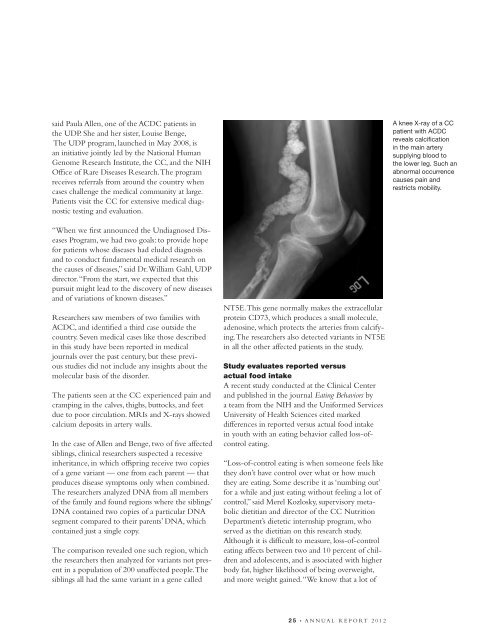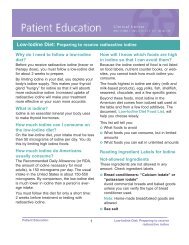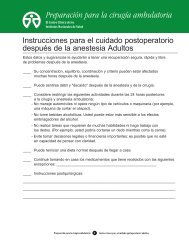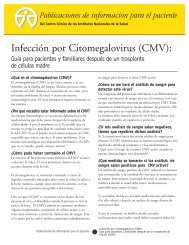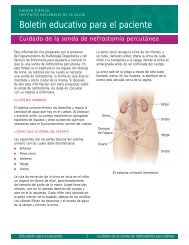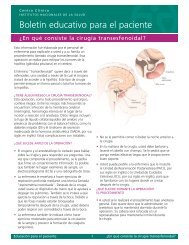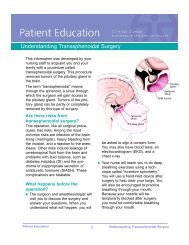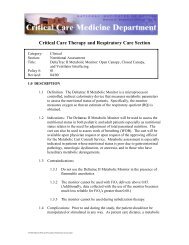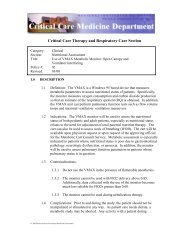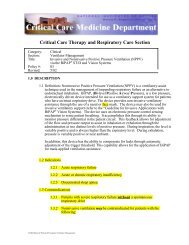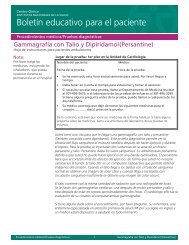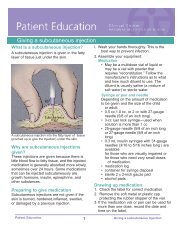NIH Clinical Center Profile 2012 - Search - National Institutes of Health
NIH Clinical Center Profile 2012 - Search - National Institutes of Health
NIH Clinical Center Profile 2012 - Search - National Institutes of Health
Create successful ePaper yourself
Turn your PDF publications into a flip-book with our unique Google optimized e-Paper software.
said Paula Allen, one <strong>of</strong> the ACDC patients in<br />
the UDP. She and her sister, Louise Benge,<br />
The UDP program, launched in May 2008, is<br />
an initiative jointly led by the <strong>National</strong> Human<br />
Genome Research Institute, the CC, and the <strong>NIH</strong><br />
Office <strong>of</strong> Rare Diseases Research. The program<br />
receives referrals from around the country when<br />
cases challenge the medical community at large.<br />
Patients visit the CC for extensive medical diagnostic<br />
testing and evaluation.<br />
“When we first announced the Undiagnosed Diseases<br />
Program, we had two goals: to provide hope<br />
for patients whose diseases had eluded diagnosis<br />
and to conduct fundamental medical research on<br />
the causes <strong>of</strong> diseases,” said Dr. William Gahl, UDP<br />
director. “From the start, we expected that this<br />
pursuit might lead to the discovery <strong>of</strong> new diseases<br />
and <strong>of</strong> variations <strong>of</strong> known diseases.”<br />
Researchers saw members <strong>of</strong> two families with<br />
ACDC, and identified a third case outside the<br />
country. Seven medical cases like those described<br />
in this study have been reported in medical<br />
journals over the past century, but these previous<br />
studies did not include any insights about the<br />
molecular basis <strong>of</strong> the disorder.<br />
The patients seen at the CC experienced pain and<br />
cramping in the calves, thighs, buttocks, and feet<br />
due to poor circulation. MRIs and X-rays showed<br />
calcium deposits in artery walls.<br />
In the case <strong>of</strong> Allen and Benge, two <strong>of</strong> five affected<br />
siblings, clinical researchers suspected a recessive<br />
inheritance, in which <strong>of</strong>fspring receive two copies<br />
<strong>of</strong> a gene variant — one from each parent — that<br />
produces disease symptoms only when combined.<br />
The researchers analyzed DNA from all members<br />
<strong>of</strong> the family and found regions where the siblings’<br />
DNA contained two copies <strong>of</strong> a particular DNA<br />
segment compared to their parents’ DNA, which<br />
contained just a single copy.<br />
The comparison revealed one such region, which<br />
the researchers then analyzed for variants not present<br />
in a population <strong>of</strong> 200 unaffected people. The<br />
siblings all had the same variant in a gene called<br />
NT5E. This gene normally makes the extracellular<br />
protein CD73, which produces a small molecule,<br />
adenosine, which protects the arteries from calcifying.<br />
The researchers also detected variants in NT5E<br />
in all the other affected patients in the study.<br />
Study evaluates reported versus<br />
actual food intake<br />
A recent study conducted at the <strong>Clinical</strong> <strong>Center</strong><br />
and published in the journal Eating Behaviors by<br />
a team from the <strong>NIH</strong> and the Uniformed Services<br />
University <strong>of</strong> <strong>Health</strong> Sciences cited marked<br />
differences in reported versus actual food intake<br />
in youth with an eating behavior called loss-<strong>of</strong>control<br />
eating.<br />
“Loss-<strong>of</strong>-control eating is when someone feels like<br />
they don’t have control over what or how much<br />
they are eating. Some describe it as ‘numbing out’<br />
for a while and just eating without feeling a lot <strong>of</strong><br />
control,” said Merel Kozlosky, supervisory metabolic<br />
dietitian and director <strong>of</strong> the CC Nutrition<br />
Department’s dietetic internship program, who<br />
served as the dietitian on this research study.<br />
Although it is difficult to measure, loss-<strong>of</strong>-control<br />
eating affects between two and 10 percent <strong>of</strong> children<br />
and adolescents, and is associated with higher<br />
body fat, higher likelihood <strong>of</strong> being overweight,<br />
and more weight gained. “We know that a lot <strong>of</strong><br />
2 5 • A N N U A L R E P O RT 2 0 1 2<br />
A knee X-ray <strong>of</strong> a CC<br />
patient with ACDC<br />
reveals calcification<br />
in the main artery<br />
supplying blood to<br />
the lower leg. Such an<br />
abnormal occurrence<br />
causes pain and<br />
restricts mobility.


